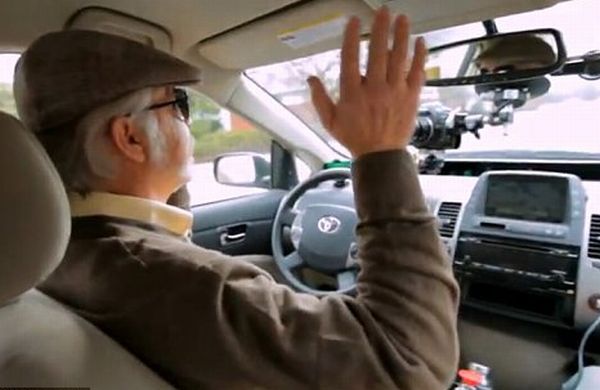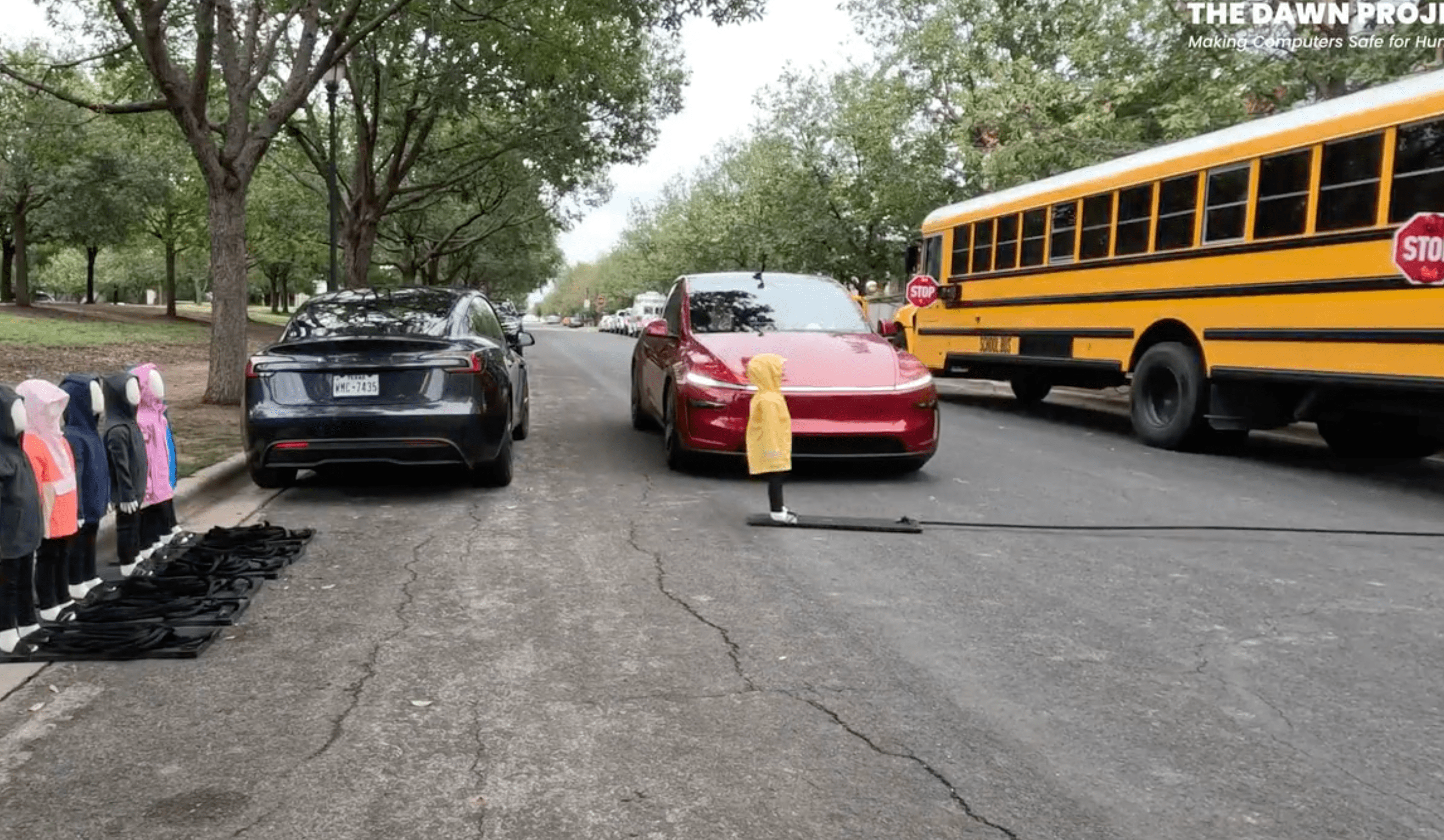
Here's the rosy scenario of a future where cars drive themselves: Instead of owning cars, people will summon autonomous vehicles, hop in, and head to their destination. With fewer cars to be stored, parking lots and garages will give way to development, eventually bringing down the cost of housing in tight markets through increased supply. Pressure to expand roads will ease, as vehicle-to-vehicle technology allows more cars to use the same road space. Traffic violence will become a thing of the past as vehicles communicate instantly with each other and the world around them.
Then there's the other scenario: People who can afford it will pay an exorbitant amount for gee-whiz driverless technology, but the new systems will have imperfections and won't integrate seamlessly with older vehicles. Most cars will still be piloted by humans, so the new tech won't have much effect on traffic hazards and congestion. The driverless car utopia will remain a Magic Highway fantasy.
Driverless vehicle technology has progressed far enough that we need to start anticipating its potential effects. Google’s autonomous vehicle fleet has driven half a million miles without a crash. But the future is extremely uncertain.
At a Congressional briefing this week, the RAND Corporation’s James Anderson, author of a recent report on the prospects for autonomous vehicles, said he is convinced that while there are advantages and disadvantages to driverless cars, "the societal benefits exceed the costs."
The best possible scenario involves a fleet of shared driverless cars and the elimination of private vehicle ownership. Cars would be in constant use, so the amount of land reserved for parking could be greatly reduced. Even if driverless car technology comes on the market soon, however, that version of the future may never arrive.
Here's how RAND and others are gaming out some of the potential effects:
Parking. Even without shared ownership, autonomous vehicles could go park themselves and lessen the pressure to build parking next to every destination and residence, freeing up large amounts of city land. With less space set aside for car parking, more could be devoted to residential development, for example, making housing more affordable.
Fuel and Emissions. The land devoted to fueling stations could decrease too, since cars could drive themselves to farther-out stations. Autonomous cars would also use less energy than conventional vehicles since they would accelerate and brake much more efficiently than humans. And if they don’t need to be built to withstand crashes -- still an enormous “if” -- driverless cars could be made of lighter materials, which would be more efficient.
Congestion. This is a tough one. If cars are often driving around empty to find distant parking lots or fuel stations, or to or from a pickup, that’s a lot of extra driving. Still, autonomous vehicles, with sensors that are more perceptive than human beings, could drive much closer together, packing more cars on the same amount of road space without slowing down traffic.
On the other hand, the cost of congestion could be reduced so greatly that people wouldn’t think twice before taking long car trips, and that could increase the number of cars on the road. After all, if you can sleep or work or have a martini on your commute, you might not mind a long one.
Safety. This is considered to be the most clear-cut benefit of self-driving cars. “Every driver believes that he or she is above average,” Anderson said. But human error is behind the great majority of crashes.
“We can see the promise of this kind of technology exercised on a daily basis with crash avoidance systems, cruise control, sensors that aid the driver, backup technology,” former U.S. Transportation Secretary Rodney Slater told Streetsblog. "You see it play out in small snippets. Now, we have the possibility of combining all that with autonomous driving."
Still, there are questions. The sensors on autonomous vehicles don’t allow for the same give and take that occurs when a pedestrian makes eye contact with a driver. Would driverless cars be programmed to always stop for people walking and biking, or would the assumption be that those people have to stop for the cars? And the sensors won’t necessarily perceive every potential conflict, like when someone is on the sidewalk, about to step off.
Transit. The conventional wisdom seems to be that driverless cars would make transit obsolete by offering convenient, point-to-point personal transport to everyone. Now you’re beginning to see why the effects on congestion and emissions are a big question mark.
But assuming that most people in this brave new world will still work 9 to 5 outside the house, transit will always be the most efficient way to move a lot of people at one time. And driverless technology could be enormously helpful for transit, too.
“The largest cost for transit agencies typically is labor,” said Jeff Wood of the Overhead Wire on the Talking Headways podcast he and I co-host. “I don’t want to say taking away jobs from people is a good idea, but the bus is an untapped resource -- especially in areas where it might not be cost-effective right now to run a bus that has seven people on it. In a driverless bus scenario, you have an opportunity to serve more people with greater frequency.”
Subsidies. One obstacle to large-scale adoption of driverless cars is that there’s “a disconnect between who gets the benefits and who might bear the costs,” said Anderson. That’s nothing new: These days, drivers are free to rack up the miles without absorbing negative externalities of their driving -- everything from oil wars to asthma. That could flip with the "positive externalities" of self-driving cars, says Anderson, which could accrue more to society than to the driver herself. Enhanced safety, congestion reduction, lower energy consumption, and land use benefits are shared at the societal level. Would purchasers pay for that? Or do the societal benefits call for a public subsidy to accelerate adoption?
The transition. In the early years, there will likely be even fewer benefits for the driver. There will almost certainly be a significant period during which cars can more or less drive themselves, but human drivers will need to be ready to take over at a moment’s notice in difficult situations. “You might pay for that if you have a particularly hellacious commute,” Anderson said, “but at what price point?”
Even the remote possibility that human intervention could be needed obliterates the lion’s share of the benefits of autonomous vehicles. Blind people and children still wouldn’t be able to use the cars. You still couldn’t sleep in a moving car. The car wouldn’t be able to drive itself to gas up or park or pick you up. There will likely be many years when driverless cars remain an expensive gizmo that doesn’t actually dramatically change the transportation landscape.
Anderson suggested that a sort of halfway version of the technology could be rolled out today -- like a low-speed driverless jitney to go around college campuses, for example.
Liability. If a driverless car crashes, who’s responsible? The conventional wisdom is that the manufacturer is -- and that’s a motherlode of liability automakers don’t want to take on. "Imagine a technology that has the potential to save many, many lives, but it only works, say, 98 percent of the time," Anderson said. "From a societal perspective, we may want that technology. However, if you’re an automaker and you know you’re going to be sued one out of every 50 times, you might have some very serious reservations about introducing that kind of technology."
RAND has brainstormed other options, including a version of strict liability for the vehicle owner, whether or not he’s technically at fault. But what if no one’s even in the car at the time of the crash? What happens in a shared-fleet future where cars aren’t even privately owned?
The anticipation of driverless technology has ramped up enormously in the last year or two, with Google’s vehicle testing and some high-profile test rides. The head of GM recently predicted that driverless cars would be on the market by 2020.
However, air bags were invented in the fifties but not even introduced until the seventies, and they weren't standard in cars until the nineties, Anderson said. The technology has existed for decades to equip each car with automatic tire pressure monitoring, but in 2014 only a tiny fraction of the vehicle fleet is equipped with that.
The technology for self-driving vehicles may exist, but how long will cost, liability, and other concerns keep it off the market, or at least out of widespread use? Looking at it through that lens, 2020 seems to be a pretty optimistic projection.





